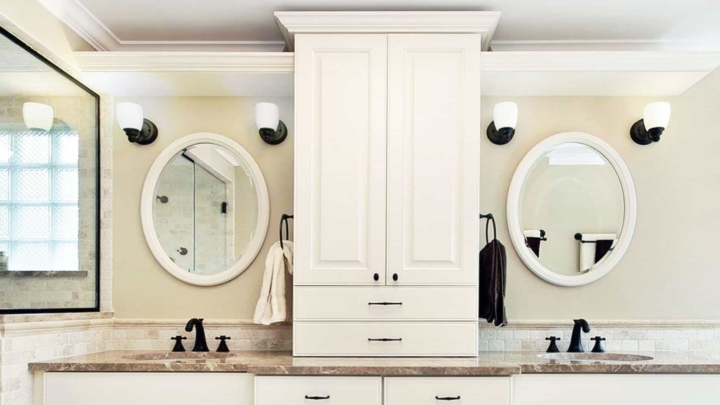Crown molding is one of the most popular trims found in a house. Similar to baseboard that hides the seams where walls meet the floor, crown moulding hides the seams where walls intersect with the ceiling.

But wait. Is it crown moulding or molding? The British use the ou spelling while Americans spell the word without the u. Some American companies like using the British spelling which is why you might recognize the word but feel challenged when you have to spell crown molding.
You might assume this decorative trim was invented in England. But you'd be wrong. The origins of crown moulding can be traced back to the ancient Egyptians who carved their molding from stone (read: 10 Things You Didn’t Know About Crown Moulding).

Is Crown Moulding a Good Investment?
Crown molding is considered a decorative trim. It's found at the top of walls where the molding meets the ceiling. Builders generally add trim around doors and windows where they meet the drywall. Crown moulding is typically an affordable upgrade that homeowners pay for.
This molding elevates the look of a room from blah to beautiful. As it's only used at the top of the room (and cabinets), the term “crown” is used to describe the molding, and thus we have crown molding.
Some people wonder if crown moulding is outdated. It's not and likely never will be. The molding isn't something you look at specifically, rather it gives a room height and more dimension which enhances the feeling of a room.
You might find these related articles worth reading:
- Interior Trim Series: Ceilings that Pop has other ideas for enhancing ceilings.
- Interior Trim Ideas to Spice Up Any Room covers a broad set of decorative trim you can use to update your home.
- Creative Hanging Shoe Storage shows a creative way to use crown molding to add wall storage.
- Not sure you'll fall in love with these updates? Check out DoyleRenovations.com's before and after photos where a picture is worth far more than a thousand words.

How to Buy Crown Molding?
You'll find crown molding at all building supply stores. In fact there will be so many choices, it can be overwhelming. Here are the key decisions you'll need to make.
- Type of material – that crown molding is made from as this is changing. Wood has been used for hundreds of years. More recently, manufacturers have created house trim from MDF, plastic and foam. These alternatives are cheaper and sometimes easier to install.
- Availability of corners (read: Building Costs, Carpentry & Corners) – for those who want to install molding themselves and don't have the carpentry skills to measure, cut and install molding around corners … because corners aren't square.

- Use of indirect lighting – as LED lighting has made decorative lighting more viable. New crown molding styles have been created to integrate this lighting cost effectively.

- Crown moulding style – covers the height, slope and profile of the molding. The building supply stores will have limited choices because that's a lot of inventory to maintain. That might be fine, especially if you want to install the molding this weekend.
If you're fussy and have more time, you'll want to shop online. Sites like uDecor.com have hundreds of crown moulding choices and so much more. Here are just of their moldings:


What Rooms Should Get Crown Moulding?
If you're excited about all the crown moulding choices you've learned about, the next decision is where it makes sense to use this type of molding. The truth is you can use molding and other decorative trim anywhere you want … it's your house and your decision.
The biggest challenge today is open floor plans. I'm sitting here in my home office which is one of four rooms in a very large, 28 x 30 ft space. If and when I decide to put up crown moulding, it means doing the entire space … not just one room.
For those who want a little more guidance, here are the traditional rooms where you're more likely to find crown molding. These rooms tend to be more formal and/or spaces like hallways, that are more challenging to decorate.
- Entryways and hallways (photo at top).
- Living rooms, family rooms and dining rooms.
- Master bedrooms are a popular place for all sorts of decorative ceiling trim.

- Kitchens and bathrooms, although it's more common to add crown molding to the cabinets in these rooms.

DIY OR HIRE A PROFESSIONAL?
Crown molding is not a simple project for beginners to install. It needs to be cut at specific compound angles which is difficult to do accurately. In addition, the installation of the crown takes accurate setting, nailing, and skilled caulking. Homeowners with strong carpentry skills can handle this project with ease … and results they're happy with.











I love these in a traditional homes. They make me think of England and they instantly give an upgraded feel. The article is very resourceful, thank you!
What a fantastic article! I’ve read (and been mentioned in a few) many articles about Crown Molding but this one is by far the most detailed and researched that I’ve ever seen. If anyone is on the fence about getting Crown Molding installed in their house this will surely convince them! Crown molding completes a room and gives it an air of elegance and sophistication. No room should be without it. Thank you for including my website!
Rory Doyle
Thanks Rory, Your words mean a lot as you’ve installed a lot more crown molding & other decorative trim than my handyman business ever did!